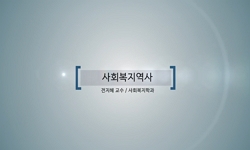Objectives: We aimed to examine whether dental waste was being managed adequately at different types of dental institutions in City D in South Korea. Methods: The staff responsible for disinfection at 101 dental offices and clinics (six dentistry dep...
http://chineseinput.net/에서 pinyin(병음)방식으로 중국어를 변환할 수 있습니다.
변환된 중국어를 복사하여 사용하시면 됩니다.
- 中文 을 입력하시려면 zhongwen을 입력하시고 space를누르시면됩니다.
- 北京 을 입력하시려면 beijing을 입력하시고 space를 누르시면 됩니다.

치과의료기관별 의료폐기물 관리 현황 파악 = Identifying Medical Waste Management Status by Different Types of Dental Institutions
한글로보기https://www.riss.kr/link?id=A105675617
- 저자
- 발행기관
- 학술지명
- 권호사항
-
발행연도
2018
-
작성언어
-
- 주제어
-
KDC
517
-
등재정보
KCI우수등재
-
자료형태
학술저널
- 발행기관 URL
-
수록면
452-459(8쪽)
- DOI식별코드
- 제공처
-
0
상세조회 -
0
다운로드
부가정보
다국어 초록 (Multilingual Abstract)
Objectives: We aimed to examine whether dental waste was being managed adequately at different types of dental institutions in City D in South Korea.
Methods: The staff responsible for disinfection at 101 dental offices and clinics (six dentistry departments of general hospitals, 12 dental hospitals, and 83 dental clinics) was interviewed.
Results: Solid suction pump waste was handled appropriately at four of the general hospital dentistry departments (66.7%), six dental hospitals (50.0%), and 15 dental clinics (18.1%). Solid spittoon waste was handled appropriately at four general hospital dentistry departments (66.7%), seven dental hospitals (58.3%), and 14 dental clinics (16.9%). Developer and fixer were handled appropriately by a subcontractor at two general hospital dentistry departments (100.0%), five dental hospitals (100.0%), and 24 dental clinics (75.0%).
Impression materials were handled appropriately at four general hospital dentistry departments (66.7%), six dental hospitals (50.0%), and 11 dental clinics (13.3%). The plastic covers of intra-oral radiography films were handled appropriately at five general hospital dentistry departments (100.0%), eight dental hospitals (72.7%), and 22 dental clinics (30.1%).
Conclusion: South Korea must implement detailed and specialized guidelines for the disposal of solid and general medical waste from dental institutions. Moreover, waste disposal training should be provided annually, and not only once every three years.
목차 (Table of Contents)
- I. Introduction
- II. Materials and Methods
- III. Results
- IV. Discussion
- V. Conclusions
- I. Introduction
- II. Materials and Methods
- III. Results
- IV. Discussion
- V. Conclusions
동일학술지(권/호) 다른 논문
-
흑연로 원자 흡광 광도기와 유도 결합 플라즈마 질량 분석기를
- 한국환경보건학회
- 권정연(Jung-Yeon Kwon)
- 2018
- KCI우수등재
-
노출 모델의 화평법 적용성: ECETOC TRA와 Stoffenmanager Tier 1 노출 모델을 활용한 벤젠의 작업자 노출 평가
- 한국환경보건학회
- 문준식(Joonsik Moon)
- 2018
- KCI우수등재
-
가습기살균제 CMIT/MIT의 기도 점적투여를 통한 임신마우스의 사산에 대한 영향
- 한국환경보건학회
- 강병훈(Byoung-Hun Kang)
- 2018
- KCI우수등재
-
휴대용 손 선풍기의 극저주파 자기장 발생 수준 평가와 쟁점 고찰
- 한국환경보건학회
- 박동욱(Dong-Uk Park)
- 2018
- KCI우수등재





 ScienceON
ScienceON 스콜라
스콜라



